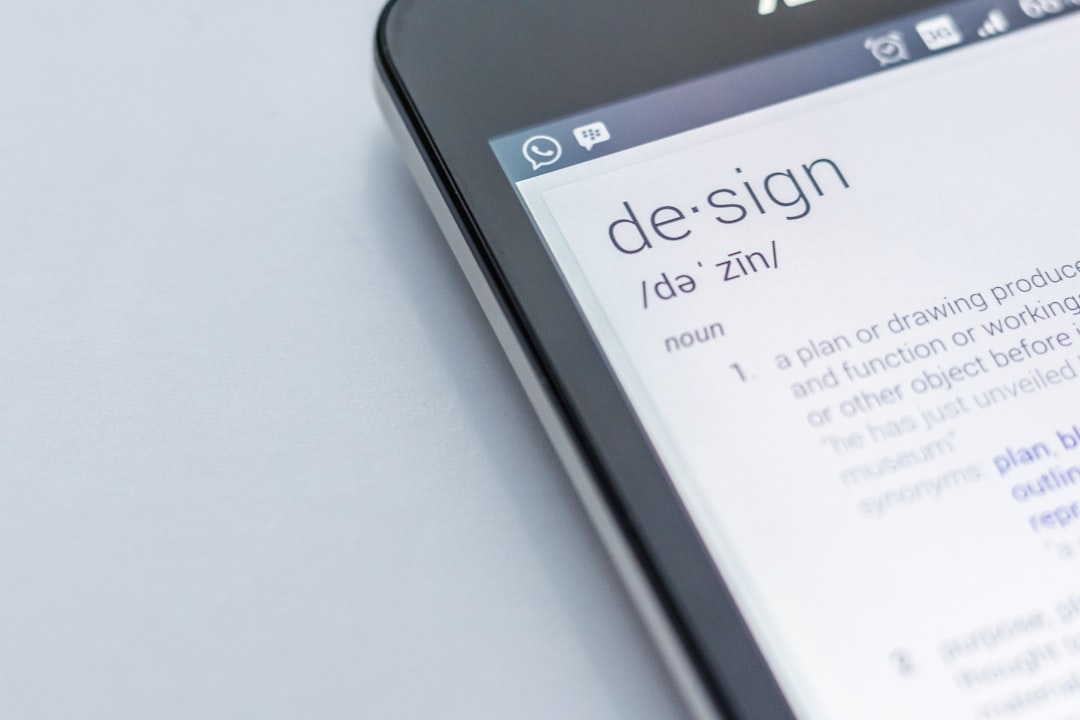Enhance Your Non-Profit Fundraising Efforts with Customized Printing Solutions
Are you looking to elevate your non-profit fundraising efforts through innovative strategies? Discover the powerful impact that custom printing has on fundraising success. From selecting the right materials to designing compelling marketing strategies, this guide will show you how to maximize your outreach and engagement. Dive into the world of non-profit fundraising using printing and unlock new opportunities for growth and impact. Read on to explore the key tactics that can take your fundraising campaigns to the next level.
Understanding the Impact Custom Printing Has on Non-Profit Fundraising
Custom printing plays a pivotal role in the success of non-profit fundraising efforts. In a competitive landscape where standing out is crucial, harnessing the power of print materials can significantly impact the reach and effectiveness of fundraising campaigns. By leveraging the right print solutions, non-profit organizations can convey their message, engage donors, and drive community support.
Importance of Custom Printing for Non-Profit Fundraising
- Building Brand Recognition: Custom printing allows non-profits to create unique and memorable branding materials that help differentiate them from other organizations. By consistently using branded print products such as brochures, flyers, and banners, non-profits can enhance brand recognition among donors and supporters.
- Conveying the Mission: Print materials serve as a tangible representation of a non-profit’s mission and values. Compelling designs and messaging on printed materials effectively communicate the organization’s cause, inspiring emotional connections with donors and fostering long-term relationships.
- Increasing Visibility: Utilizing print advertising in fundraising campaigns can expand the reach of non-profit organizations. Printed materials like posters and direct mailers can reach a broader audience and attract new supporters who may not have been aware of the organization’s initiatives through online channels alone.
- Enhancing Donor Engagement: Personalized print collateral, such as thank-you cards and newsletters, play a crucial role in donor engagement. By acknowledging and updating donors through tailored print materials, non-profits can strengthen relationships, encourage recurring donations, and foster a sense of community among supporters.
- Generating Fundraising Resources: Print materials are essential tools for showcasing fundraising initiatives and events. Well-designed promotional materials for charity events, donation drives, and community outreach programs can attract a larger audience, boost participation, and ultimately drive donations towards the cause.
In essence, custom printing is not just about putting ink on paper; it’s about creating a visual identity for non-profit organizations that resonates with donors and supporters. By harnessing the impact of print solutions in fundraising initiatives, non-profits can amplify their message, engage their community, and drive the success of their fundraising efforts. In the next sections, we will delve deeper into choosing the right print materials and designing effective print marketing strategies for non-profit organizations.

Choosing the Right Print Materials for Your Fundraising Campaigns
When it comes to boosting non-profit fundraising through effective printing strategies, choosing the right print materials is a critical step. The print materials you select can make a significant impact on the success of your fundraising campaigns. Here are some key considerations to help you make the best choices for your non-profit organization:
1. Understanding Your Target Audience: Before selecting print materials for your fundraising campaigns, take the time to understand your target audience. Consider their demographics, preferences, and interests. Tailoring your print materials to resonate with your audience will increase engagement and donations.
2. Quality vs. Cost: While it’s important to stay within your budget, opting for high-quality print materials can make a difference in how your organization is perceived. Invest in materials that look and feel professional to convey credibility and trustworthiness to potential donors.
3. Print Materials Variety: A well-rounded fundraising campaign often includes a variety of print materials. Consider using a mix of brochures, flyers, posters, banners, and donation forms to reach different segments of your target audience and convey your message effectively.
4. Brand Consistency: Ensure that all your print materials align with your non-profit organization’s branding guidelines. Consistent use of colors, fonts, logos, and messaging across all materials will help build brand recognition and reinforce your mission.
5. Sustainability: In line with the values of many non-profit organizations, consider the environmental impact of your print materials. Opt for eco-friendly options such as recycled paper, soy-based inks, or digital printing to reduce your carbon footprint and appeal to eco-conscious donors.
6. Customization and Personalization: Personalized print materials can make a significant impact on donor engagement. Tailor your materials with donor names, donation histories, or targeted messages to show appreciation and foster a deeper connection with your supporters.
7. Call-to-Action Clarity: Every print material should include a clear and compelling call-to-action to prompt donors to take the desired next step. Whether it’s donating online, attending an event, or spreading the word, make sure your call-to-action is prominent and easy to follow.
By carefully selecting the right print materials for your fundraising campaigns, you can effectively convey your message, engage donors, and drive donations for your non-profit organization. Remember, the right print materials are not just about aesthetics but also about strategic communication and building relationships with your supporters.
Designing Effective Print Marketing Strategies for Nonprofit Organizations
In the competitive landscape of non-profit fundraising, designing effective print marketing strategies is crucial for standing out and garnering support. Print materials play a significant role in conveying the mission and impact of nonprofit organizations to potential donors and supporters. By incorporating thoughtful design elements and strategic messaging into print marketing, non-profits can enhance their outreach efforts and drive successful fundraising campaigns.
Here are some key considerations for designing effective print marketing strategies for nonprofit organizations:
- Define Your Brand Identity: Before diving into the design process, it’s essential to have a clear understanding of your organization’s brand identity. Define your core values, mission statement, and target audience to ensure consistency in your print materials.
- Create Compelling Visuals: Visual elements are powerful tools in capturing the attention of the audience. Incorporate high-quality images, relevant graphics, and engaging typography to make your print materials visually appealing and memorable.
- Craft Persuasive Messaging: Your print marketing materials should communicate your organization’s impact and highlight the importance of donor support. Craft compelling messaging that resonates with your audience and motivates them to take action.
- Utilize Call-to-Actions: A strong call-to-action is essential in guiding readers on the next steps they can take to support your cause. Whether it’s donating, volunteering, or attending an event, clearly outline the actions you want your audience to take.
- Consider Print Material Varieties: Explore a range of print materials, such as brochures, flyers, posters, banners, and promotional merchandise, to reach your audience through various channels. Tailor the design and messaging to suit the specific purpose of each material.
- Stay Consistent Across Channels: Maintain consistency in design elements, colors, and messaging across all your print materials and other marketing channels. Consistency builds trust and reinforces brand recognition among your audience.
- Incorporate Storytelling: Use storytelling to evoke emotions and create a personal connection with your audience. Share impactful stories of how donations have made a difference and showcase the real-world impact of your organization’s work.
- Optimize for Print Quality: Ensure that your print materials are of high quality to reflect the professionalism and credibility of your organization. Work with reputable printing services that can deliver crisp, vibrant prints for maximum impact.
By implementing these strategies, non-profit organizations can create compelling print marketing materials that effectively convey their mission, drive donor engagement, and ultimately boost fundraising success. Effective print marketing can serve as a powerful tool in raising awareness, generating support, and making a lasting impact in the nonprofit sector.
Utilizing Print Collateral to Enhance Donor Engagement
When it comes to maximizing donor engagement for your non-profit organization, leveraging the power of print collateral can make a significant impact. Print materials not only serve as a tangible representation of your cause but also play a crucial role in fostering connections with potential donors. Let’s explore how effectively utilizing print collateral can enhance donor engagement in your fundraising efforts.
1. Establishing Brand Identity:
Print collateral such as brochures, flyers, and posters can effectively communicate your non-profit’s mission, values, and impact. By incorporating consistent branding elements such as logos, color schemes, and messaging, you can create a cohesive identity that resonates with donors and reinforces your organization’s credibility.
2. Showcasing Impactful Stories:
Print materials offer a platform to showcase compelling stories of the individuals or communities your non-profit serves. By featuring real-life success stories, testimonials, and case studies in your print collateral, you can evoke emotions and connect with donors on a personal level, inspiring them to support your cause.
3. Engaging Visual Design:
Eye-catching design plays a crucial role in capturing the attention of potential donors. Utilize visual elements such as high-quality images, infographics, and creative layouts to make your print collateral visually appealing and easy to digest. A well-designed print piece not only conveys information effectively but also leaves a lasting impression on donors.
4. Call-to-Action Strategies:
Include clear and compelling calls-to-action in your print materials to encourage donor participation. Whether it’s directing donors to your website, inviting them to a fundraising event, or inspiring them to make a donation, a strategic call-to-action can guide donors towards taking the desired next step and engaging with your non-profit.
5. Personalized Touch:
Personalization is key to building meaningful relationships with donors. Customize your print collateral by addressing donors by name, tailoring content based on their interests, or recognizing their past contributions. Personalized print materials show donors that they are valued and appreciated, fostering a sense of loyalty and connection.
6. Multi-channel Integration:
Integrate your print collateral with digital channels to create a seamless donor experience. Include QR codes, social media handles, or website links in your print materials to drive donors to online platforms for further engagement. By combining print and digital strategies, you can amplify your reach and deepen donor relationships.
7. Follow-Up and Relationship Building:
Use print collateral as a follow-up tool to express gratitude, provide updates on your non-profit’s impact, and maintain communication with donors. Sending thank-you cards, newsletters, or annual reports via mail not only keeps donors informed but also reinforces their connection to your organization, leading to long-term engagement and support.
By leveraging print collateral effectively, your non-profit can enhance donor engagement, build relationships, and ultimately drive successful fundraising initiatives. Incorporate these strategies into your print marketing efforts to create compelling and impactful materials that resonate with donors and inspire them to become advocates for your cause.
Incorporating Print Solutions in Fundraising Initiatives
When it comes to running successful fundraising initiatives for non-profit organizations, incorporating print solutions can be a game-changer. Print materials offer a tangible way to engage with your audience and leave a lasting impression. Let’s explore how you can effectively utilize print in your fundraising efforts.
- Printed Marketing Materials:
One of the most common ways to incorporate print solutions in fundraising initiatives is through printed marketing materials. Brochures, flyers, posters, and banners can be powerful tools to promote your cause, raise awareness about your fundraising campaigns, and attract donors to your events. Utilize compelling design and messaging to make your print materials stand out and resonate with your target audience. - Custom Merchandise:
Consider creating custom merchandise items as part of your fundraising strategy. T-shirts, tote bags, mugs, or other promotional products with your non-profit’s branding can serve as both fundraising tools and marketing materials. Supporters can purchase these items as a way to contribute to your cause while also becoming brand ambassadors for your organization. - Event Signage and Decor:
For charity events and fundraisers, print solutions play a crucial role in creating a cohesive and branded environment. Utilize event signage, banners, and decorations to set the tone for your event, highlight key sponsors, and provide essential information to attendees. Well-designed print materials can enhance the overall experience and leave a positive impression on your guests. - Direct Mail Campaigns:
While digital marketing has gained popularity, direct mail campaigns still have a place in non-profit fundraising efforts. Sending out donation appeals, newsletters, or event invitations via direct mail can help you reach donors who prefer physical communication. Personalize your mailings, use compelling copy, and include eye-catching visuals to increase engagement and drive donations. - Impact Reports and Thank You Cards:
After a successful fundraising initiative, it’s essential to show appreciation to your donors and demonstrate the impact of their contributions. Print solutions like impact reports and thank you cards provide a personal touch and create a sense of connection between donors and your organization. Share success stories, highlight achievements, and express gratitude for their support.
Incorporating print solutions in fundraising initiatives allows non-profit organizations to create meaningful connections with their donors, raise awareness about their cause, and drive fundraising success. By strategically leveraging print materials throughout your campaigns, you can enhance donor engagement, boost brand visibility, and ultimately achieve your fundraising goals.
Measuring the Success of Print Advertising in Nonprofit Fundraising
In the realm of nonprofit fundraising, measuring the success of print advertising initiatives is crucial for evaluating the effectiveness of campaigns and optimizing future strategies. By delving into key performance indicators and analyzing the impact of print materials, organizations can fine-tune their outreach efforts and drive greater engagement and support. Let’s explore how assessing the performance of print advertising plays a pivotal role in enhancing fundraising endeavors.
Tracking Donor Response Rates
One of the primary ways to gauge the success of print advertising in nonprofit fundraising is by tracking donor response rates. By monitoring metrics such as the number of donations received, the volume of inquiries generated, or the level of engagement with printed materials, organizations can evaluate the effectiveness of their campaigns. Understanding how donors interact with print materials provides invaluable insights into audience preferences and behaviors, enabling nonprofits to tailor their strategies for maximum impact.
Measuring Return on Investment (ROI)
Determining the return on investment from print advertising efforts is instrumental in assessing the financial performance of fundraising campaigns. Calculating the costs associated with designing, printing, and distributing materials against the revenue generated through donations gives organizations a clear picture of the profitability of their initiatives. By analyzing ROI metrics, nonprofits can identify which strategies yield the best results and allocate resources more efficiently in future fundraising endeavors.
Analyzing Brand Awareness and Recognition
Print advertising plays a vital role in building brand awareness and recognition for nonprofit organizations. Monitoring indicators such as brand visibility, message recall, and brand sentiment among donors helps assess the impact of print materials on audience perception. By analyzing brand metrics, nonprofits can evaluate the effectiveness of their branding strategies and refine their messaging to resonate more effectively with supporters. Strengthening brand recognition enhances trust and credibility, fostering stronger donor relationships and long-term commitment.
Tracking Engagement and Response Channels
Measuring the success of print advertising involves tracking engagement and response channels to identify which platforms or mediums drive the most significant interaction. Analyzing data from printed materials, such as QR code scans, website visits attributed to print ads, or responses to call-to-action prompts, provides valuable insights into audience engagement levels and preferences. By identifying the most effective channels for eliciting responses, nonprofits can optimize their print advertising strategies and enhance donor participation in fundraising initiatives.
Evaluating Campaign Performance Over Time
Continuous evaluation and analysis of print advertising performance are essential for nonprofits looking to refine their fundraising strategies and achieve long-term success. By comparing campaign data across different periods, organizations can identify trends, measure progress, and adjust their approaches based on evolving donor behavior and market dynamics. Tracking performance over time allows nonprofits to adapt to changing conditions, capitalize on successful tactics, and address challenges proactively to maximize fundraising outcomes.
In the realm of nonprofit fundraising, measuring the success of print advertising serves as a critical component in enhancing donor engagement, optimizing strategies, and achieving fundraising goals. By leveraging data-driven insights and performance metrics, organizations can refine their print advertising approaches, strengthen brand impact, and drive sustained support for their missions. Evaluating the effectiveness of print materials empowers nonprofits to elevate their fundraising initiatives and make a lasting difference in their communities.
Request a Quote Today : Your Next Step to Success



Leave a Reply